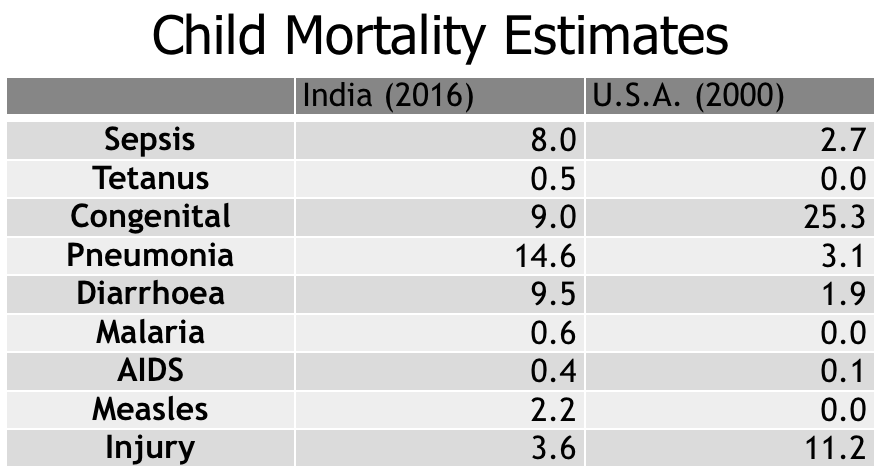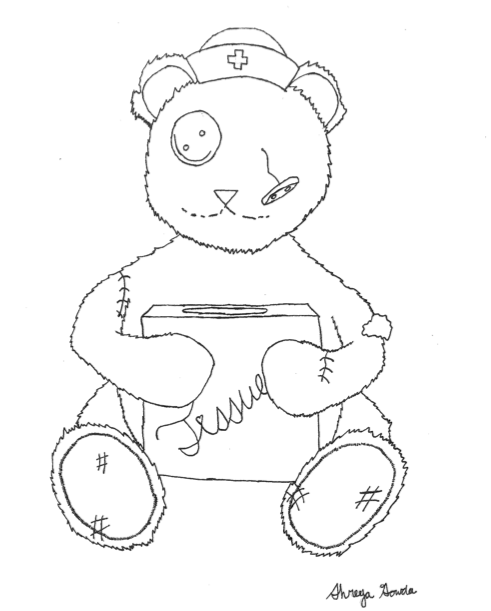Sanitary awareness is forgone in India
Most Indian elementary school children do not have basic sanitary awareness, especially compared to American children.
Sneeze into your elbow. Wash your hands and sing your ABC’s. Eat a balanced meal. These were the hymns of health, drilled into all elementary school kids’ heads.
“Most kids know proper hand hygiene to prevent the spread of infection. They cover their mouth and nose with their forearm or elbow. They know healthy eating. Most kids know because they teach it in schools now,” said Jessica Culmer, a medical assistant at Advocare Marlton Pediatrics.
“Most kids know to wash hands, [to have] regular checkups, brushing their teeth, being active, getting sleep. Everything that’s on my wall,” said Mrs. Heather Karbach, the school nurse at E.T. Hamilton Elementary School. In her office, she has a large well with all the checkpoints for wellness.
It’s incomprehensible to think that this was not a memorable part of someone’s childhood. But in other countries, countries such as India, sanitary education is not a large part of the curriculum.
“Most kids know hand washing, but in India, a lot of the times they don’t use soap,” said Dr. Ramesh Ragothaman, a private pediatrician.
This summer, I volunteered at a sanitary education program in India. It was at a concrete school, with holes in the wall instead of windows. Bright murals of tigers, elephants, and the Indian flag stood plastered on every coverable surface. Barefoot children from third grade to kindergarten sat in respective rows on a concrete patio outside, misbehaving kids getting wacked on the head or pulled by the ears.
A doctor was leading a program where she visited several government schools to teach the basics: brushing your teeth, washing your hands, wearing clean clothes. To kids as old as third graders, she demonstrated the proper way to wash your hands. Kids grinned from ear to ear when they could demonstrate. She finished with telling them sanitary habits, such as “Don’t wipe your hands on your clothes because they are dirty,” and left to do the same at another school.
The doctor told the principal that she would come back for individual counseling with the students to screen for any mental problems. The principal laughed. “The kids are the problems,” she said.
To say India’s youth needs to become more sanitarily aware of their surroundings is an understatement. India’s under five mortality rate is 43 per 1,000 live births. The United States of America’s mortality rate is 24.9 per 100,000 live births (.249 per 1,000).
The effect of lack of sanitary education can be seen in the leading causes of death amongst the countries in children under five. The leading causes of deaths here is accidents, congenital diseases (diseases from birth), and assault (homicide). In India, the leading causes of death are infectious diseases such as pneumonia (14.6%), diarrhea (9.5%), and sepsis (8.0%), as well as congenital diseases (9.0%). With proper sanitary awareness, these diseases could be prevented and reduced.
It’s hard to tell children to practice sanitation when their parents do not. 44% of India’s population practices open defecation. Only
40% of the population uses basic sanitation services. Many children were barefoot despite provided shoes through charities because their parents were not used to wearing shoes either.
In America, the parents have a large responsibility in the sanitary welfare of their child. “It’s the parents’ job to educate the child, because there will be times when they are not with the child. So then they [the children] can carry it wherever they go,” said Culmer.
Parents take a lot of the responsibility since “they take care of the long-term things,” said Karbach. “It really depends on the role models at home.”
“A lot of healthy habits come from the atmosphere at home. If a parent emphasizes health or exercises themselves, then the child would be more motivated. Parents should emphasize health, because often times, the emphasis goes to academics,” said Dr. Ragothaman.
Parents are encouraged to start young. “Most kids get potty-trained by 18 months, so that’s a good time to teach good sanitation habits, such as hand washing,” said Dr. Ragothaman. Most schools implement courses where sanitation is taught, especially hand washing.
However, that is not to say sanitary education solely benefits developed countries. According to the hygiene hypothesis, the lack of infections in countries has lead to the increase in allergies and autoimmune diseases. Countries without proper sanitation have less allergies and autoimmune diseases.
In older kids, most health problems occur due to poor food habits and lack of proper exercise, which leads to anemia, obesity, diabetes, high blood pressure, and similar health problems.
“In my experience with my patients, about 20-25 percent of kids are overweight, especially those who come from lower socioeconomic classes,” said Dr. Ragothaman.
18.4 percent of children 6-11 are obese in America and approximately 20 percent live in nutrition insufficient households, meaning they are malnourished and go hungry during the year. Although that is alarming, it does not compare to the 43 percent of children who are underweight in India.
“The most important part of being a pediatrician is making sure a child develops and grows in all areas,” said Dr. Ragothaman. This is a solace to Americans: less than 5 percent of minors do not have access to a usual health care source. Also, only 5 percent of American minors do not have health insurance. On the contrary, only 5 percent of Indian households have health insurance. In India, only 1.1% of the GDP is allocated to health, so two-thirds of households resort to private medical care, which is more effective but much more expensive.
Considering India contributes 13.1 percent of the 0-6 population, it may be time to consider advocating for global sanitation rights.








